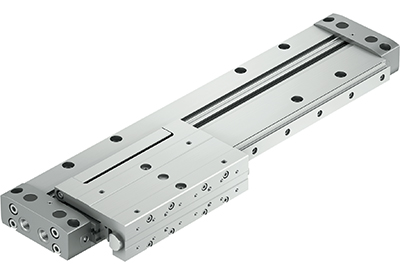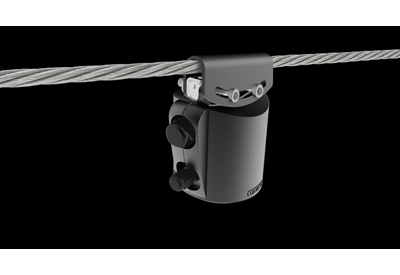Festo’s DLGF Flat Design Rodless Drive Fits Tight Spaces and Budgets

March 11, 2020
Festo designed the new space-saving, flat, DLGF rodless linear drive as a very economical choice for applications where installation space is especially tight, like in electronics, small parts assembly, packaging and handling technology. Since those space considerations can also make a pneumatic drive harder to adjust or service, Festo also made its proprietary self-adjusting end-cushioning (PPS) standard with DLGF. Self-adjusting cushioning saves time and makes processes more reliable; the drive is always providing the correct cushioning. (Poorly or incorrectly adjusted cushioning can lead to premature wear of a pneumatic drive or even product quality issues.)
The DLGF is significantly flatter and has much smaller installation dimensions than typical rodless actuators and is available in both basic non-guided and recirculating ball bearing-guided versions. This new rodless linear drive comes with multiple pneumatic connection options at different locations on the device: left or right side, both ends or even from below.
DLGF is ideal for tasks such as pushing, gripping, weight compensation or for moving loads with slow to fast dynamic response with uniform movement. It makes an excellent drive for a space optimized pick&place unit or creating a long-stroke gripper. With the guided version – KF– there are two different slide interfaces: one on the top for mounting pneumatic slides, and one on the side for mounting up to three ADN pneumatic compact cylinders. Two DLGF drives of the same size can be easily coupled together, although they can have different stroke lengths.
Other benefits of the DLGF are simple design, sturdy materials, direct mounting of the drive without accessories, easy-to-mount slides without the need for adaptors, and new sealing geometry which saves on compressed air costs.
For more information, visit www.festo.com.










![Guide to the Canadian Electrical Code, Part 1[i], 26th Edition – A Road Map: Section 10 – Grounding and Bonding](https://electricalindustry.ca/wp-content/uploads/2022/11/Guide-CE-Code-2.png)





